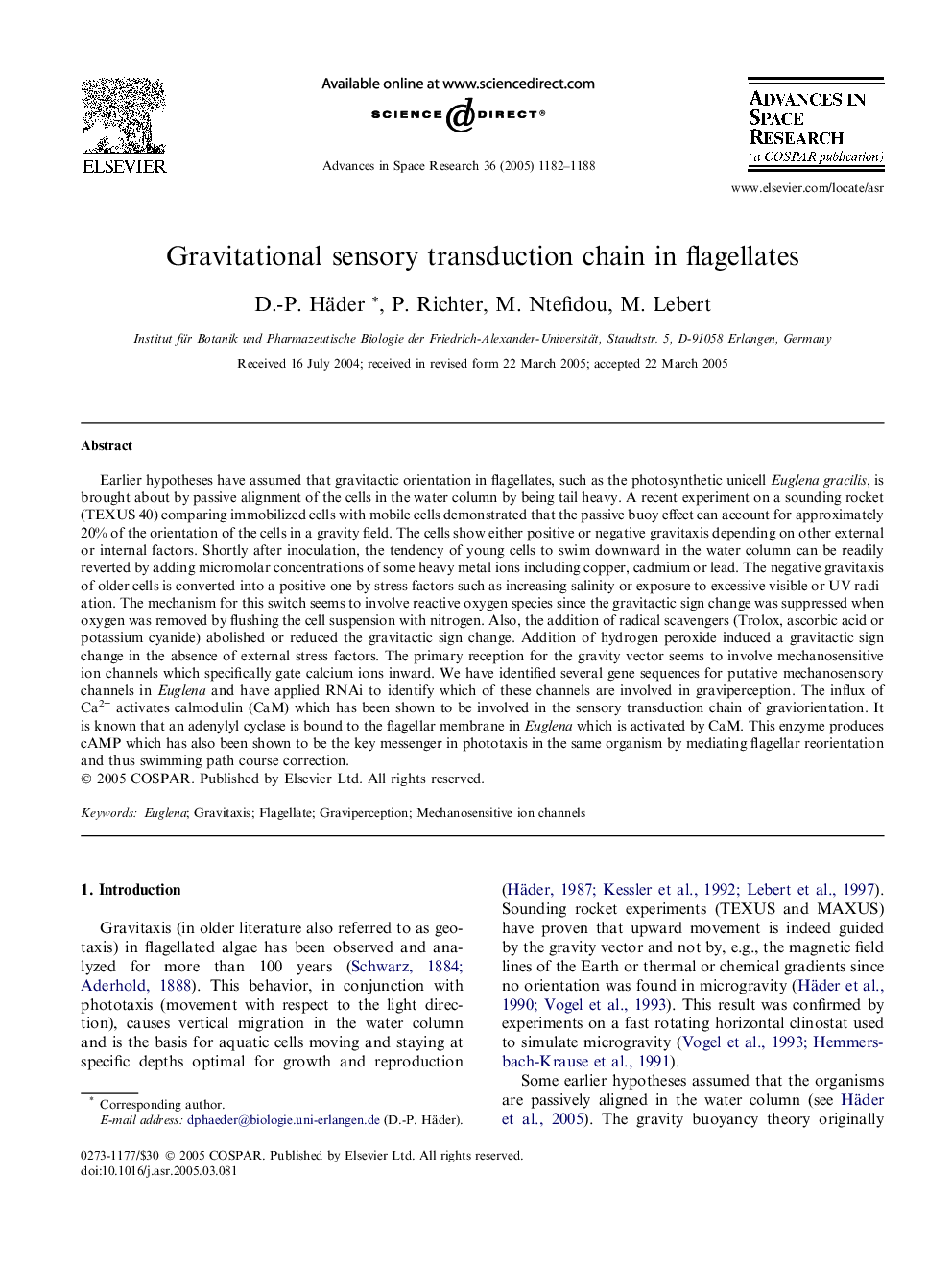| Article ID | Journal | Published Year | Pages | File Type |
|---|---|---|---|---|
| 10694685 | Advances in Space Research | 2005 | 7 Pages |
Abstract
Earlier hypotheses have assumed that gravitactic orientation in flagellates, such as the photosynthetic unicell Euglena gracilis, is brought about by passive alignment of the cells in the water column by being tail heavy. A recent experiment on a sounding rocket (TEXUS 40) comparing immobilized cells with mobile cells demonstrated that the passive buoy effect can account for approximately 20% of the orientation of the cells in a gravity field. The cells show either positive or negative gravitaxis depending on other external or internal factors. Shortly after inoculation, the tendency of young cells to swim downward in the water column can be readily reverted by adding micromolar concentrations of some heavy metal ions including copper, cadmium or lead. The negative gravitaxis of older cells is converted into a positive one by stress factors such as increasing salinity or exposure to excessive visible or UV radiation. The mechanism for this switch seems to involve reactive oxygen species since the gravitactic sign change was suppressed when oxygen was removed by flushing the cell suspension with nitrogen. Also, the addition of radical scavengers (Trolox, ascorbic acid or potassium cyanide) abolished or reduced the gravitactic sign change. Addition of hydrogen peroxide induced a gravitactic sign change in the absence of external stress factors. The primary reception for the gravity vector seems to involve mechanosensitive ion channels which specifically gate calcium ions inward. We have identified several gene sequences for putative mechanosensory channels in Euglena and have applied RNAi to identify which of these channels are involved in graviperception. The influx of Ca2+ activates calmodulin (CaM) which has been shown to be involved in the sensory transduction chain of graviorientation. It is known that an adenylyl cyclase is bound to the flagellar membrane in Euglena which is activated by CaM. This enzyme produces cAMP which has also been shown to be the key messenger in phototaxis in the same organism by mediating flagellar reorientation and thus swimming path course correction.
Related Topics
Physical Sciences and Engineering
Earth and Planetary Sciences
Space and Planetary Science
Authors
D.-P. Häder, P. Richter, M. Ntefidou, M. Lebert,
